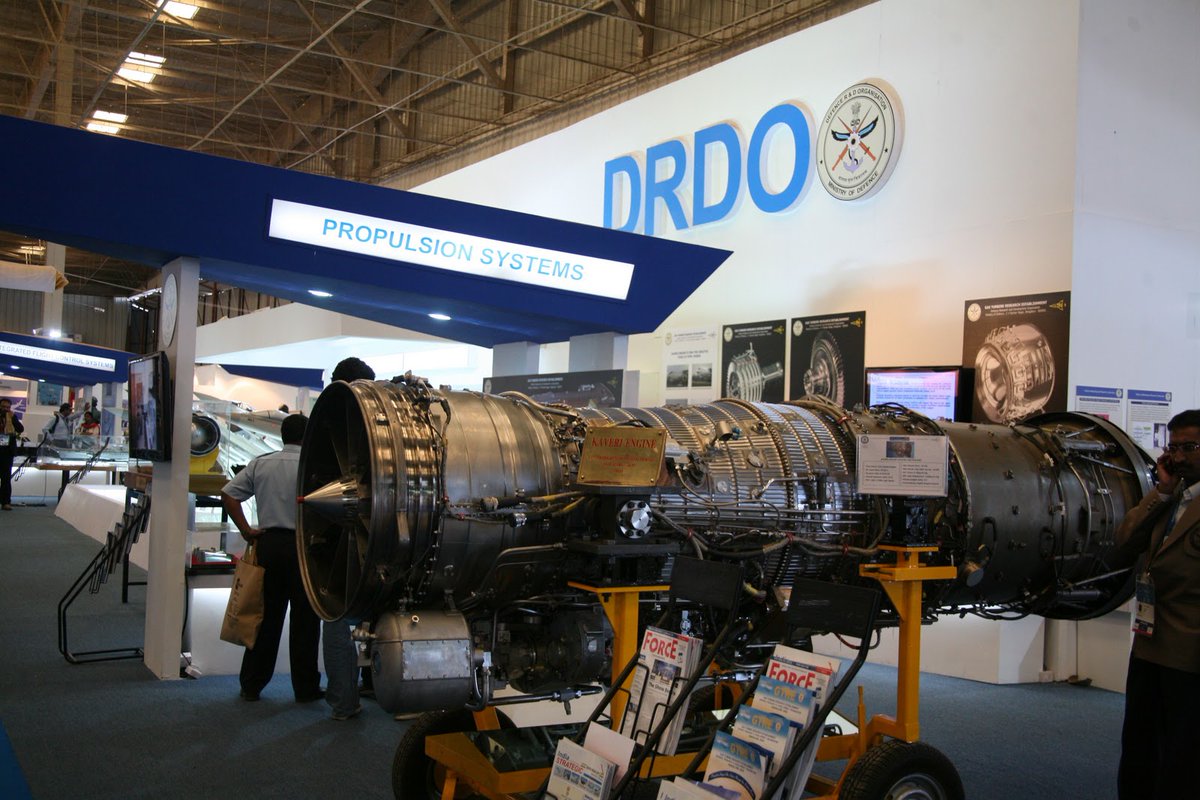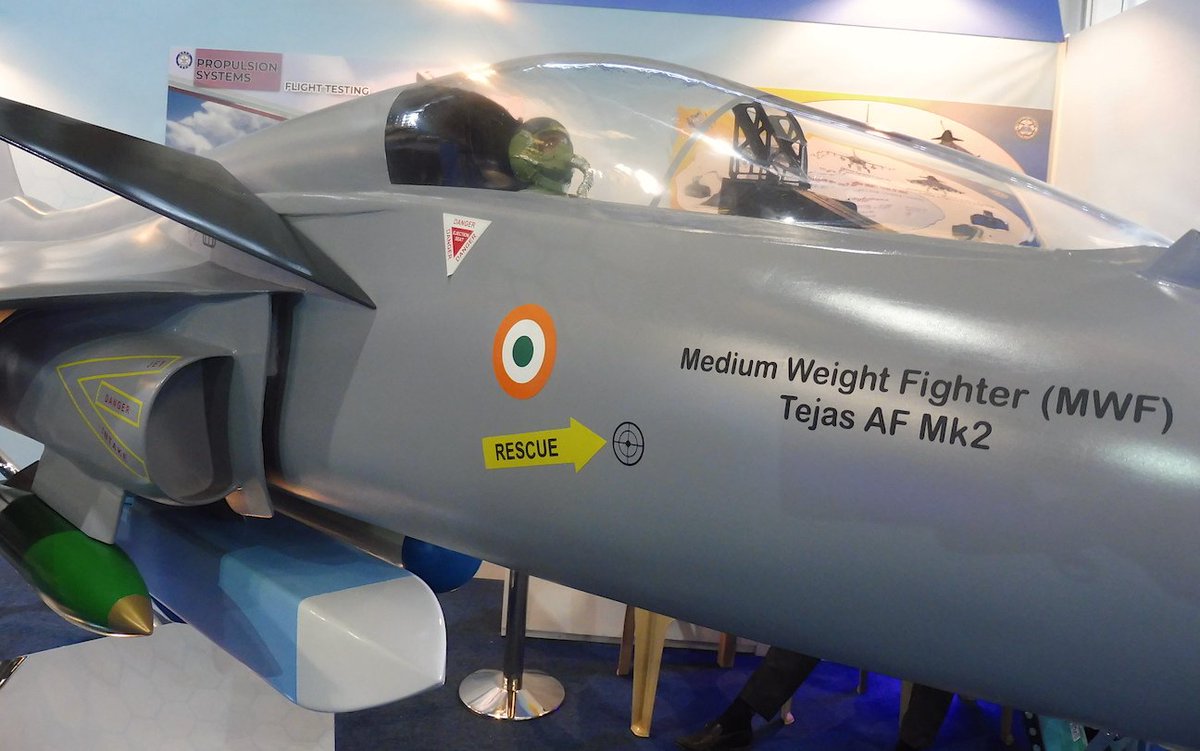India’s federal government made a slew of announcements in Parliament that are likely to usher in a new era in indigenous defense manufacturing. A new locally developed engine with international assistance for its indigenous fighters is now on the cards, in addition to existing ‘Make in India’ programs.
While the Tejas Light Combat Aircraft (LCA) is currently powered by an imported engine, the Government informed Parliament on November 29 that it plans to develop indigenous engines for LCA variants and the Advanced Medium Combat Aircraft (AMCA) in collaboration with a global manufacturer in the future, reported The Hindu.
“The Flight Operational Clearance (FOC) configuration of the LCA Tejas requires more thrust than the proposed domestic engine can provide. As a result, the Kaveri cannot be integrated into the current architecture. A modified engine version is necessary to induct with LCA Tejas,” India’s junior defense minister Ajay Bhatt said in a written reply to the Rajya Sabha, the upper house of Parliament.

Kaveri is the name of the indigenous engine project that was commissioned 30 years ago and is now in the trial stage.
On the projected engine development in the future, the Defense secretary emphasized that the technological capabilities gained through the Kaveri engine project will be of significant utility. However, this official statement means that the Kaveri project is not going to power India’s ambitious advanced combat fighter development.
The Development Of Kaveri
The indigenous Kaveri engine project was approved by the Cabinet Committee on Security (CCS) in 1989. The project, which cost Rs 2035.56 crore and lasted 30 years, resulted in the production of nine full prototype engines and four core engines.
The engine was tested for a total of 3217 hours, and it also passed altitude tests and trials on the Flying Test Bed (FTB), The Hindu report said.

Despite this, the Kaveri’s thrust is only about 65 Kilo Newtons (KN), far less than the 95 KN produced by its main competitors, the Eurojet EJ200 and the General Electric GE-F414.
As of now, the GE-F404 engines power the LCA FOC version and the Mk-1A, while the other Tejas variant LCA-Mk2 and the AMCA will be powered by the more powerful GE-F414 engines in the future.
Even though the former is a reliable engine that has been used on American F/A-18 Hornet fighters and the Mk-1A LCA variant, the more advanced versions to be manufactured domestically are believed to require a more powerful engine with more thrust capacity. This is where the GE-F414 comes into the picture.
Multiple Options To Choose From
Earlier this year, India’s state-run aerospace company Hindustan Aeronautics Limited (HAL) sealed a $716 million deal with GE Aviation of the United States for 99 F404 aircraft engines and related services to power the indigenous Tejas LCA Mk-1A.
The Defense Ministry had signed a ₹48,000 crore deal with HAL to supply 83 LCA-Mk1A to the Indian Air Force in February this year.
HAL had then mentioned that the collaboration would be bolstered by the production of GE F414 engines in India for the forthcoming LCA Mk-2 program. According to the statement, the F404 family of engines has accumulated over 14 million engine flight hours and powered 15 different commercial and prototype aircraft.

The recent announcement made in Parliament hints that GE could be picked to help India produce engines for LCA and AMCA domestically. This will achieve the twin objective of securing a more advanced engine for the fighters while also giving a fillip to India’s ‘Make in India’ and ‘Atmanirbhar Bharat’ (self-reliant India) initiatives.
British engine maker Rolls-Royce had also expressed keen interest in collaborating with India to co-develop and manufacture engines for the country’s AMCA fifth-generation fighter aircraft program in September this year. This goes on to prove that India has more than just one option to choose from.
Going Indigenous Is The Mantra?
India’s local defense manufacturing ecosystem has recently been making concerted efforts to indigenously produce engines for aircraft.
In May this year, using its unique 2000 MT isothermal forge press, the state-run “Defence Research and Development Organisation (DRDO) established near-isothermal forging technology to make all five stages of high-pressure compressor (HPC) discs out of difficult-to-deform titanium alloy”, announced the Ministry of Defense.
The Hyderabad-based Defense Metallurgical Research Laboratory of DRDO accomplished this technological achievement by producing complicated titanium and nickel-based alloys that can endure temperatures of over 1,000 degrees Celsius (DMRL).
These were sent to HAL’s Bengaluru Engine Division for installation in the Adour 804/811 and 871 engines that power the Indian Air Force’s Jaguar/Hawk aircraft.
With this breakthrough, India joined a select group of worldwide engine developers who are capable of producing such crucial aircraft engines.
India has been trying to further indigenization through domestic innovation and collaboration with foreign giants. This is the flagship agenda of the present Indian dispensation and both, LCA Tejas and the AMCA program are at the center of it.
- Contact the author at sakshi.tiwari9555@gmail.com
- Follow EurAsian Times on Google News




